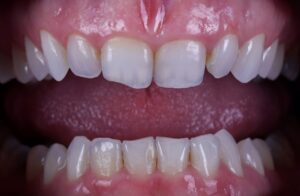Ceramic Porcelain Fracture Guidelines #2: Broken Dentistry
by Dr. John Nosti
Broken dentistry can be a useful place to start when determining a patient’s past tendencies.
For many dentists, one of the worst restoration nightmares is when a patient presents with a ceramic porcelain fracture. Instead of completely avoiding the stress of placing ceramic restorations, utilize an understanding of how to protect patients from common fracture issues.
Protect Patients Who Present with Broken Dentistry
In my last blog, I discussed how certain types of ceramic porcelain fracture can be avoided with proper occlusion when a patient has the tendency to grind their teeth during sleep. In many cases though, perfect occlusion cannot solve the problem and you will still be left with a frustrating fracture.
When perfected occlusion isn’t the solution, one approach to prevent ceramic porcelain fracture is to set yourself up for success by recognizing which patients are highly likely to experience fracture.
Clinical Tip: Start with a comprehensive understanding of your patient’s dental history.
Let’s say that a patient is in need of comprehensive restorative dentistry. Before you begin treatment, take these elements into consideration:
- Does the patient have existing broken dentistry?
- Have they broken solder joints or fractured bridgework?
- Do you they present with multiple fractures to their existing dentition (without large unsupported direct restoration)?
If the answer is yes to any of these questions, than your next step is to explain to the patient that they will need a protective appliance. This will prevent fracture once their dentistry is complete.
Though it may seem simple, getting a holistic understanding of a patient’s past dentistry is key to averting a fracture mishap.
Look for the next four guidelines in this series to learn more tips for limiting the percentage of porcelain fracture in your dental practice.
Read Dr. Nosti’s first guideline to ceramic porcelain fracture, where he delves into the best approach to occlusion for preventing fractures.



